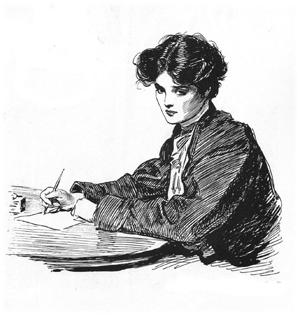“I” is for Inkscape
 So you’ve finished writing the most awesome book ever. You’ve gone through it with critique partners, sent it to beta readers, and revised it fifty times. It’s been edited, proofread, and formatted. And now it’s ready for the world!
So you’ve finished writing the most awesome book ever. You’ve gone through it with critique partners, sent it to beta readers, and revised it fifty times. It’s been edited, proofread, and formatted. And now it’s ready for the world!
Okay, so maybe every man, woman, and child in the world won’t be interested in your book.
While our books may have universal truths or material that would benefit everyone, we know that our book isn’t for everyone. Fortunately, we also know that there are many who would truly enjoy and benefit from our book. We want to reach those people, our audience.
The back-cover blurb is very important for letting potential readers know what they will find inside. It needs to be well-crafted so that it hooks readers and gives them a feel for what they’ll find inside and for your writing style, whether you write fiction or non-fiction.
No matter how many times Mama tells us, “Don’t judge a book by it’s cover,” we all know we do.
The first thing your readers will see is your book cover. This is true whether your book is primarily sold on Amazon or other online stores, at physical bookstores, or at author events. So you need a cover that compels readers to pick up your book and flip it over to read that back-cover blurb.
To reach your specific audience, your cover needs to convey these essential elements:
- let readers know the genre
- capture the theme and mood
- visually represent the entire story or subject
- it must also look professional and appealing

When I design a book cover, I use Inkscape, a free professional quality vector graphics software, and free images or images provided by the author or publisher. If you are interested in cover design, check out these resources!
Inkscape: https://inkscape.org/
Images that are free for commercial use can be found at the following sites, but please make sure they are public domain, CC0 1.0 Public Domain Dedication.
- https://morguefile.com/
- https://pixabay.com/
- https://unsplash.com/
- http://realisticshots.com/
- http://www.lifeofpix.com/
- http://www.gratisography.com/
- http://freenaturestock.com/
- http://magdeleine.co/license/cc0/
- https://viralsweep.com/blog/free-stock-images-for-commercial-use/
In addition to creating book covers, you can use Inkscape to create all the promotional materials you need and to prepare files ready for the printer. I use it to make bookmarks, flyers, and graphics for social media. Youtube has several Inkscape tutorials to help you get started.
Cover Design Basics
- Brainstorm. Think about your book’s theme. What symbols might convey that theme? You don’t want too many symbols or images cluttering up your cover and you don’t want meaningless symbols or your book cover will look amateurish. You want to focus on one element that gives a good feel for your story. So brainstorm and come up with the best.
- Show don’t tell. In the past, designers tended to illustrate or photograph the characters in action during a scene taken right from the book. Instead, use symbolism and give hints or sneak peaks into your story. Experiment with symbols. A simpler and more symbolic design draws readers in better. You don’t need to tell everything in the cover design but you do need to hint or give a feel for everything. Avoid being too literal in your design.
- Color plays a big role in conveying mood and genre. The dominant color is most important and can draw attention to the design. Limit the number of colors to 2 or 3. Complimentary colors create energy while analogous colors (the ones next to each other on the color wheel) provide harmony and tranquility. Keep the contrast high to increase visibility, making sure your title and author name stand out on the shelf or online. Contrast can be increased not only by using complimentary colors but by combining light and dark shades. You can have eye-popping contrast even with analogous colors this way. If you are using a photo, your color choices will be driven by the color that dominates the photo.
- Study other book covers in your genre. You will notice that each genre leans toward specific color combinations and font styles. Don’t avoid them, trying to be original. Readers instinctively use them to identify genre, tone, and mood of a book.
- Keep it simple. Don’t use too many font styles, colors, symbols, or images. Keep it clean and appealing. Consider using a subtitle if you think it will help identify your target audience, set your book apart from others, clarify a benefit of your book, create a strong brand for your book, or add clarity to your title. Try to get your point across in as few words as possible. Keep it clear, tight, and memorable. Don’t repeat words from the title and again, consider your target audience.
If you want to talk cover design, leave a comment!
















